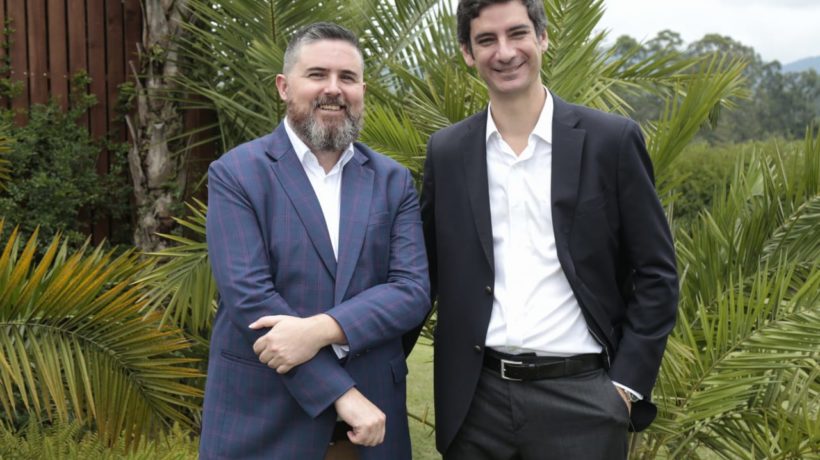With its strong economic performance and strategic position to the US, Europe and Southeast Asia, Latin America is one of the world’s most promising regions for business.
Growing middle classes in countries such as Brazil and Colombia represent large consumer bases for products, and ideas emerging from upcoming innovation hubs in Latin America can also count on access to the US’s thriving Hispanic community.
Simply put, it’s a good time to be doing business in or with LATAM, and friction in starting new businesses is being even further reduced due to new accelerator and incubator programs.
Viva Air, led by CEO Felix Antelo, recently announced the region’s first airline innovation lab, Viva Air Labs.
Partnering with ACI Medellín and ProColombia, it’s looking to engage startups and passengers and grow the aviation ecosystem. Its first major project is developing a payment system on Whatsapp to purchase tickets.

Viva Air Labs Director Clyde Hutchinson
Said the company’s Executive Chairman Declan Ryan, “Viva Air’s ambition to become Latin America’s most innovative Airline, revolutionising the Low Cost Carrier model, is today taking a step further through the establishment of Viva Air Labs.”
Director Clyde Hutchinson spoke to Sociable about the idea behind Viva Air Labs. The interview has been edited for clarity and brevity.
Talk to me about Viva Air Labs. Who came up with the idea?
Irelandia has always been involved in innovation, through the creation of the low cost carrier. One of our main goals is to figure out how to use the platform of being a low cost carrier to be part of the innovation process going on in the countries where we have flights. We want to harness innovation in Latin America by creating a space for Latin Americans to solve problems within Latin America.
Who comes up with the projects for Viva Air Labs team?
We have a few mechanisms: We take internal suggestions from team members, source feedback from users online, in addition to identifying problems and solutions through the partnerships we’ve formed. We’re also working with universities like EAFIT and Universidad de Los Andes to develop projects that would be of interest to students.
For example?
We find that using and analysing data is something that students are interested in. Because the airline industry has not typically been good with collecting and using data, we want to work with students to decide what kinds of data are important and what’s the best way to analyze and use it.
What is the timeline for the first Viva Labs project?
We’re ramping our activity up to release in the next quarter. The main areas that I’m interested in are payment, creating digital content, and an open-data project. But we are actually in the process of working on thirty active projects.
Thirty active projects? That’s a lot. How big is the team behind Viva Air Labs?
It is a lot. But we do things efficiently and want to involve people within the company to be involved in leadership throughout the process. That said, our team is pretty lean. It’s me and my project leader; however, we rely heavily on the partnerships we’re making with startups and universities. We really operate like a startup and we’re always thinking about how to do this in a quick and efficient way. Being a small airline in Latin America has its benefits because we are able to be leaders in the project as opposed to some legacy airliners, that have over 500 people on one project.
What’s the demographic of people that you envision will use the Viva Labs interface?
We’ve already had a diverse group of people contact us: university students, government officials, employees from very established companies. We actually had one undergrad student from Colombia come up with a project. He always travels from Bucaramanga to Bogotá to visit his girlfriend and he proposed a project that we actually came up with internally. I wanted to have coffee with him just to meet him in-person.
You mentioned that you were really focused on partnerships. Can you give me an example of one?
I can’t tell you but I will say that the first partnership is a Latin American startup and we’re really excited about it. One question that we’re constantly asking is ‘how do we use our position as an airline to embrace startups?’ We want to take advantage of the innovation that’s going on in the places where we have flights. The more partnerships that we can develop, the better.
______
Viva Air had a growth year in 2018, with the addition of 50 new aircraft to its fleet and the expansion of its routes to Lima, Santa Marta, and Miami.
The airline joins multiple organizations pursing travel innovation, including Air France-KLM, Airbus’s BizLab, Amadeus Next, and Booking.com’s Booster.
Disclosure: This article includes a client of an ESPACIO portfolio company.










